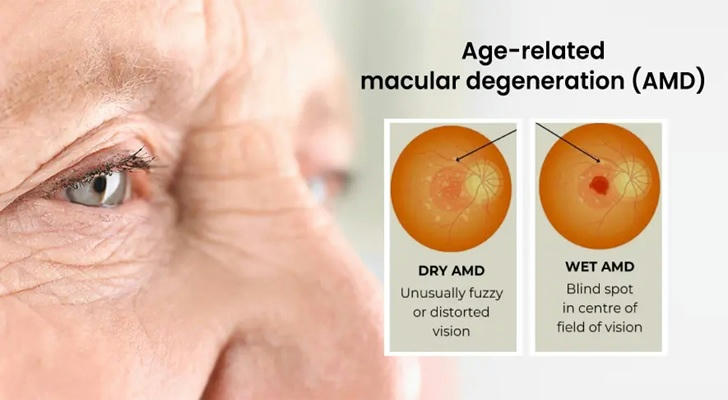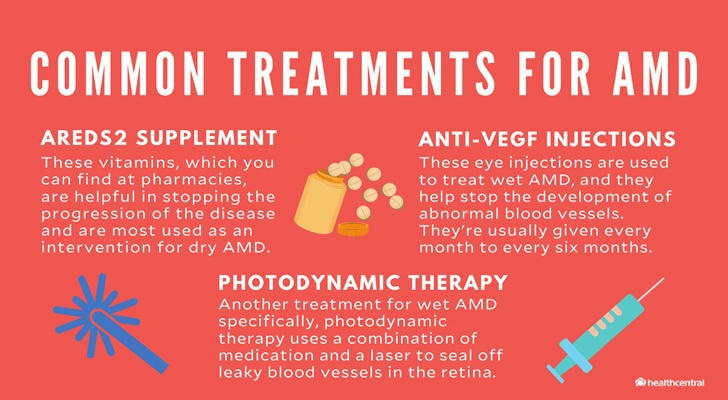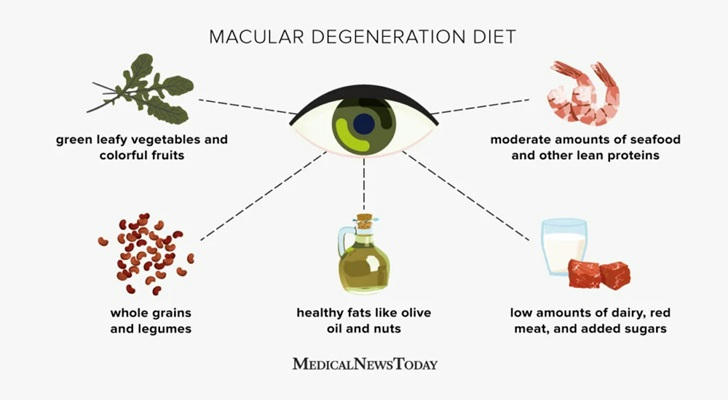Saving Your Sight: Understanding and Treating Age-Related Macular Degeneration (AMD)
Age-Related Macular Degeneration (AMD) is a progressive eye disease and the leading cause of vision loss in people over 50. It affects the macula, the central part of the retina responsible for sharp, detailed vision needed for reading, driving, and recognizing faces. While AMD does not lead to complete blindness, it can severely impair quality of life by damaging central vision.

With an aging global population, AMD cases are expected to rise, making awareness and early intervention crucial. This article explores the types, causes, symptoms, treatments, and preventive measures for AMD to help you protect your vision.
What Is Age-Related Macular Degeneration?
The macula is a small but vital part of the retina that processes fine visual details. AMD occurs when this area deteriorates due to aging, genetic factors, and environmental influences. There are two main forms:
1. Dry AMD (Atrophic)
- Most common type (80-90% of cases)
- Develops slowly as the macula thins and small protein deposits (drusen) accumulate.
- Vision loss is gradual but can progress to advanced geographic atrophy (GA), where retinal cells die, causing permanent blind spots.
2. Wet AMD (Neovascular or Exudative)
- Less common (10-15% of cases) but more severe
- Abnormal blood vessels grow under the retina, leaking blood and fluid, which scars the macula.
- Can cause rapid and severe central vision loss if untreated.
Who Is at Risk for AMD?
While aging is the primary risk factor, other contributors include:
- Age: Most common in those over 60, with risk increasing with each decade.
- Genetics: Family history of AMD raises risk.
- Smoking: Doubles or triples the likelihood of developing AMD.
- Race: More prevalent in Caucasians.
- Cardiovascular disease: High blood pressure and cholesterol may worsen AMD.
- Obesity & poor diet: Low intake of antioxidants (lutein, zeaxanthin) increases risk.
- Sun exposure: Prolonged UV exposure without protection may contribute.
Symptoms of AMD
Early-stage AMD may have no symptoms, but as it progresses, signs include:
- Blurred or fuzzy central vision
- Dark or empty spots in the center of vision
- Distorted vision (straight lines appearing wavy)
- Difficulty reading or recognizing faces
- Reduced color brightness
An Amsler grid (a checkerboard-like chart) can help detect early vision distortions—if lines appear wavy or missing, see an eye specialist immediately.
Diagnosing AMD
An ophthalmologist or optometrist can diagnose AMD through:
- Comprehensive eye exam – Checks for drusen and retinal changes.
- Visual acuity test – Measures sharpness of vision.
- Amsler grid test – Detects distortions in central vision.
- Optical coherence tomography (OCT) – Provides detailed retina images.
- Fluorescein angiography – Uses dye to detect leaking blood vessels (for Wet AMD).
Early detection is key to slowing progression.
Treatment Options for AMD

1. Dry AMD Treatments
There is no cure, but these strategies can slow progression:
- AREDS2 Supplements – A specific blend of vitamins (C, E, zinc, copper, lutein, zeaxanthin) reduces advanced AMD risk by 25%.
- Lifestyle changes – Quitting smoking, eating leafy greens (kale, spinach), and consuming omega-3-rich fish (salmon, mackerel) may help.
- Low-vision aids – Magnifiers, screen readers, and special glasses assist with daily tasks.
2. Wet AMD Treatments
Since Wet AMD progresses quickly, prompt treatment is essential:
- Anti-VEGF Injections (Lucentis, Eylea, Avastin) – Block abnormal blood vessel growth, stabilizing or improving vision in 90% of cases.
- Photodynamic Therapy (PDT) – Uses laser and light-activated drugs to destroy leaking vessels (less common now).
- Laser Surgery – Seals leaking blood vessels (rarely used today due to risks).
Newer treatments under research include stem cell therapy and gene therapy, offering hope for future breakthroughs.
How to Prevent or Slow AMD Progression

While some risk factors (age, genetics) can’t be changed, these steps can help protect your vision:
- Get Regular Eye Exams – Annual check-ups after age 50.
- Quit Smoking – Major modifiable risk factor.
- Eat a Vision-Healthy Diet – Leafy greens, colorful fruits, fish, and nuts.
- Exercise Regularly – Improves blood flow to the eyes.
- Wear Sunglasses – Blocks harmful UV and blue light.
- Control Blood Pressure & Cholesterol – Reduces vascular damage risk.
- Monitor Vision at Home – Use an Amsler grid weekly.
Living with AMD: Adapting to Vision Changes
While AMD can be challenging, many people maintain independence with:
- Low-vision rehabilitation – Training to maximize remaining sight.
- Assistive technology – Audiobooks, voice-activated devices, and high-contrast settings.
- Support groups – Emotional and practical help from others with AMD.
Conclusion
Age-Related Macular Degeneration is a serious but manageable condition. Early detection, modern treatments, and healthy lifestyle choices can significantly slow its progression. If you or a loved one is at risk, schedule regular eye exams and adopt preventive measures to safeguard your vision.
With ongoing research, future therapies may offer even better outcomes—so staying informed and proactive is the best way to save your sight.
Would you like additional resources on clinical trials or low-vision support groups? Let us know in the comments!
